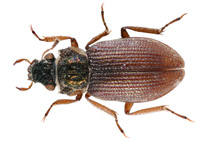Abstract
Lepidopygopsis, known as the peninsular-Indian hill trout, is a monotypic genus endemic to the Periyar stream-reservoir system, in the Western Ghats. Due to the morphological similarity of its only species, L. typus, with the Himalayan schizothoracine fishes, it was considered to be a relict species and a classic example of disjunct distribution. Using mitochondrial and nuclear gene sequence datasets, we show that L. typus is not allied to the schizothoracine fishes. Phylogenetic hypothesis-testing unequivocally supports a scenario in which L. typus and a clade comprising various genera of Asian and African barbins such as Tor, Gonoproktopterus, Kosswigobarbus and Varicorhinus are sister groups. Based on our results, we suggest that the sheath of tile-like scales covering the anal-fin base of schizothoracine fishes and Lepidopygopsis typus could be a symplesiomorphy or a homoplasy.

